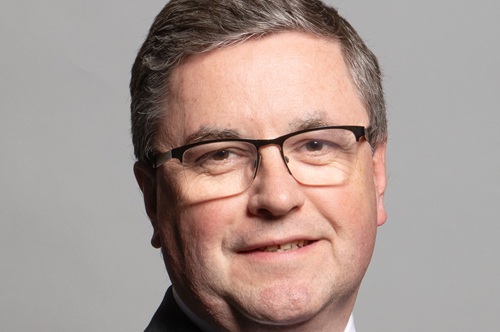The Health and Safety Executive (HSE) has released its new strategy for 2022-2032.
Opinion
HSE commits to improving mental health as it sets out its plans for the next decade
Although its focus continues to be to ensuring that in general “those who create risk, take responsibility for controlling risk” and that “those who fail to do so will be held to account and bear the cost”, among its strategic objectives for the next decade will be an emphasis on improving mental health and stress.
It is well known that an employer’s obligation is not just to ensure, so far as reasonably practicable, the physical safety of their workforce, but their health, including their mental health, too, with risk assessments required to take account of both.
 Hannah Burton: "The mental health of the workforce has been moving up the boardroom agenda in recent years."
Hannah Burton: "The mental health of the workforce has been moving up the boardroom agenda in recent years."
The physical safety of workers has long been a focus of HSE, with their work in this area generally seen as the gold standard for other countries to emulate. However, although HSE’s new strategy notes that Great Britain’s “well-established standards for safety, recognised and understood by industry... have helped to reduce death and major injury, particularly in construction and manufacturing”, this is not the case for work-related ill health, “as current trends show this is increasing”.
With no shortage of statistics on working days lost to stress, anxiety and depression (HSE has previously said more than 17 million working days were lost to these forms of work-related ill health in Great Britain in 2019/20), numerous sectoral initiatives have been launched to try and tackle the issue. These include HSE’s own ‘Working Minds’ campaign, aimed at helping businesses recognise the signs of work-related stress and make tackling these issues routine. In tandem, HSE has called for a culture change across Britain’s workplaces to ensure psychological risks are treated in the same way as physical risks in health and safety risk management.
HSE’s ‘Working Minds’ campaign followed the publication last June of international management standard ISO 45003. ISO 45003 sets out internationally agreed guidelines and practical guidance for managing psychosocial risk within an occupational health and safety management system, to prevent work-related injury and ill health and promote wellbeing at work.
ISO 45003, coupled with ‘Working Minds’, give employers a real opportunity to make significant progress in managing employee wellbeing. Existing management standards, published by HSE in 2004, also help organisations understand what they need to do to assess and manage the risks to employee wellbeing posed by work-related stress.
With the increase in remote or hybrid working showing little sign of abating in some sectors, late last year, HSE also issued updated guidance on working from home. This underlined employers’ responsibilities to their staff outside the office – in particular, the need for businesses to consider the potential impact of home working on employees’ mental health, alongside safety issues like their working environment and equipment requirements.
Mental health moving up the agenda
The mental health of the workforce has been moving up the boardroom agenda in recent years in recognition of the fact that people are often an organisation’s greatest asset. However, by highlighting that mental health will be a key area of focus, HSE is sending a clear message to employers. That message is to make sure you properly assess the risks and mitigations you have in place in relation to both mental and physical wellbeing and put in place appropriate action plans tailored to your particular business.
HSE has committed to use its “collective resource to focus on this problem”, and to “deliver interventions that make a real difference”. What this means in practice remains to be seen but could legislative change be on the agenda? While there is surely little appetite to increase the regulatory burden on businesses just now (and in fact the government has committed to reducing this), some have queried whether there might be an expansion of the list of incidents which employers are required to report under the Reporting of Injuries, Diseases and Dangerous Occurrences Regulations 2013.
For example, suicides in the workplace are not currently reportable as the regulations only require you to report a death from a workplace accident. Nor do coroners tend to refer these cases to HSE for investigation. As a result, as things currently stand, there is little accountability for the workplace causes of stress, anxiety and depression that may contribute to a death. Could this be ripe for change? Time will tell.
HSE enforcement action on work-related stress
It may only be a matter of time, too, before we see enforcement action taken by HSE in this area. HSE frequently uses targeted inspections in order to drive up standards. Its focus on workplace ill health and work-related stress may well inform those inspections in future. Organisations found to be at fault can expect enforcement action and, given the priority status of workplace mental health both within HSE and beyond, it may well only be a matter of time before we see a prosecution before the courts in the UK.
Employers in the UK should take note of a landmark ruling in France in 2019 when it comes to ensuring the mental health of their employees. Former senior executives of France Télécom (now Orange) were given prison sentences and fines after being found guilty of ‘institutional harassment’ and creating a culture of routine workplace bullying which led to a number of suicides at the company. The case was the first time that managers had been held criminally responsible for implementing a general strategy of bullying even if they had not dealt directly with the staff involved. The company itself was also given a multi-million euro fine.
In its recent consultation, Mental Health and Wellbeing plan; discussion paper, the UK government identified the need for a clearer role for businesses and employers in preventing the onset of mental health conditions and mental ill health, and “wider implementation of workplace interventions to support mental health”. This political will to ensure the workplace is a positive force in improving societal mental health is increasingly being matched by public will in this area too. What this means in practice, however, only time will tell.
Hannah Burton is Associate solicitor at Pinsent Masons LLP
OPINION

How to create a neuroinclusive workplace
By John Robinson, Schofield Sweeney on 09 December 2025
The modern workplace is a diverse environment. Most workforces will be made up of individuals representing the majority of the groups protected under the Equality Act 2010.

Don’t lose autism in the neurodiversity wave – why targeted reform is essential
By Rt Hon Sir Robert Buckland KBE KC on 03 December 2025
Autistic adults have waited too long for meaningful reform. They have shared their experiences and expertise. Now they deserve action, accountability, and transformation.

Inclusion saves lives: embedding equality, diversity and inclusion (EDI) into global occupational safety and health
By Umer Changaiz, CMIOSH on 03 December 2025



